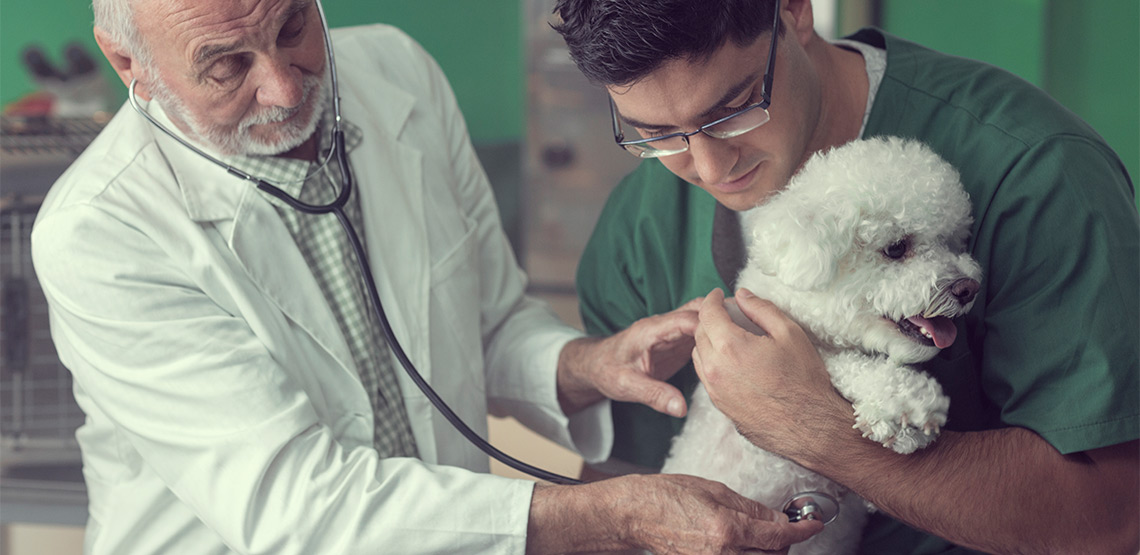A Job in High Demand
There are many routes available to those who want to work with animals. Today we are going to look at one of the most versatile of them, that of working as a veterinary technician, as ultimately a qualification in this field can lead to a wide variety of career choices.
Your role as a veterinary technician is to assist the veterinarian in caring for the animals in his or her charge. Currently, there is a high demand for vet techs in the US and abroad. This demand is predicted to continue climbing at a rate of about 20% well into 2026 and beyond.
The exciting rewards of this career choice come from the physical and mental challenges of providing professional animal care. This can include: surgical assistance, injury or disease care, anesthetics, radiology, records and charts, nourishment and waste elimination, lab tests, medication administration and more.
The route to becoming a veterinary technician in the US is to attend a school with an American Veterinary Medical Association (AVMA) accredited program. Today, there are also a plethora of quality online vet schools offering veterinary technician education and practical training.
After you have qualified you can work in private practice with a veterinarian, however, with accredited training, you’ll also be ready and eligible for jobs in many other areas. You may want to consider research, zoos and wildlife sanctuaries, livestock agriculture, police K9 or military service, rescues and shelters, veterinary pharma and supply sales, breeder facilities, animal feed formulation, nutrition consultation, government fish and game services, or many other fields.
As a Vet Tech You Can Focus on the Following Specializations
- Dental technician
- Emergency care
- Pet or animal trainer
- Zoological practice
- Anti-poaching/monitoring endangered animals
- Species specialties: horses, cattle, sheep, swine, pets, marine, etc.
- Anesthetist/surgery assistant
- Internal medicine
- Pathology
- Clinical practice
- Nutrition
This is also a great career if you are interested in either working or volunteering abroad and it can be an excellent foundation for a career in conservation.
Related Search Topics (Ads):
Vet Tech Programs and Vet School Requirements
Wondering how to become a vet tech? To start, a person must have a good general education, in particular focusing on chemistry, math, English and biology. When beginning a vet tech curriculum, you’ll learn about all aspects of veterinary medicine in detail, including but not limited to:
- Veterinary medicine
- Anatomy
- Physiology
- Animal care
- Restraint methods
- Laboratory protocols
- Hematology
- Parasitology
- Radiology
- Anesthesiology
- Pharmacology
- Surgical assisting
- Small and large animal feeding and care
As well as theory there will also be plenty of hands-on lab and internship time to enhance your vet tech training. You will be required to undertake up to 90 credit hours to complete a two year vet tech program at US veterinary schools or veterinary colleges.
Roles Within Veterinary Medicine After Your Veterinary Tech Training
There are three different levels recognized within the Veterinary Practice Act. These are: veterinary assistants, veterinary technicians and certified veterinary technicians. Each requires a different level of study and qualification. You can find out more from the Board of Veterinary Medicine in the state in which you wish to study.
What Are the Duties of a Vet Tech?
A vet tech must always work under the supervision of a state licensed veterinarian. The technologist is not allowed to perform or iterate any prognosis or diagnosis, perform any operative dentistry including tooth extractions, prescribe treatment, or perform any kind of surgery.
It is vital that anyone wanting to work as a veterinary technician, whether licensed, registered or certified, must hold a valid certificate to practice veterinary technology as prescribed by the state in which they are employed.
Here’s an overview of the main duties of the role of a vet tech:
- Providing first aid and practical care
- Assisting veterinarians as needed during exams and procedures
- Blood sampling, IV procedures and urinary catheter insertions
- Performing or assisting with diagnostic tests
- Performing routine procedures
- Surgery prepping, inducing anesthesia, assisting in surgery, recovery and patient monitoring
- Supervised dispensing of prescription medications
- Instructing pet owners on animal care and welfare, vaccinations, weight and exercise, etc.
- Ensuring all animals receive humane treatment and reporting animal abuse
In Conclusion
Working as a veterinary technician has many rewards. However, as with any job within a medical field, it does come with its share of difficult times. Therefore, it’s important that you can maintain a level of detachment when necessary.
A veterinary practice can be a stressful place to work and veterinary technicians must be equipped to deal with a wide range of situations including: emotional owners, uncooperative animals, the loss of someone’s dearly loved pet, and occasionally seeing severe injuries caused by neglect. While it’s important to be an animal person, this is a role which will also require you to very much be a people person too.
However, the benefits of working with animals are many. For animal enthusiasts of all kinds who have a passion for higher learning in the sciences, a rewarding career as a veterinary technician awaits. As a veterinary technician you will come to know many animal patients throughout their lives.
You will have endearing relationships with the animals in your care and, in the case of pets, with their loving owners. The care and compassion you will give as a vet technician will contribute hugely to each animal’s overall quality of life.
